Last week, in The New York Times survey of “the best of dance” in 2015, Gia Kourlas saluted Misty Copeland, dubbing her “ballet’s new Billy Elliot,” but called her out on her fouetté turns, saying “she needs to fix them.”
Amid the vast array of technical foibles and demonstrations of bad taste that littered the ballet landscape in 2015, Misty Copeland’s fouetté turns should not rank very high as a target for sharpshooting critics.
It’s time to bid those 32 fouettés adieu (understanding that we mean any number over eight successive whipping turns – because that’s the threshold at which today’s attention-deficit audiences start yawning and checking their Twitter feeds. And, if you are one of those obsessive balletomanes who entertain themselves by counting the wretched things, you know that few ballerinas actually do 32, because many of them are off the music. Then there are those who throw in the occasional double and triple – because they can, not because the music calls for it.)
Those 32F are now 122 years old and it’s time choreographers worked a little harder to invent new stuff.
They were no doubt miraculous back in 1893 when Italian firecracker Pierina Legnani pioneered them, throwing them into Cinderella. But now they’ve been in the repertoire for ages, growing mold, and training methods have improved to the point where many dancers without any other outward signs of artistry can pull them off.
Few ballerinas do them acceptably, however.
All the rest should hone their exit strategies – as Misty Copeland did admirably in her maiden outing as Odile with Washington Ballet at the Kennedy Center in April. As Ballet to the People reported, when Copeland’s fouettés started to travel (a no-no in Swan Lake) she switched seamlessly to single pirouettes – each push-off from fifth position a fiery stamp, befitting the seductress Odile, and right on the music.
Other prima ballerinas exit to piqué or chaîné turns. Whatever the strategy, it has to have that air of “I meant to do that.” The replacement step has to be in character and convey the same sensation – either a tornado of malice (Swan Lake) or an expression of euphoria (Don Quixote).
Sara Mearns yielded a textbook example of a weak exit strategy on opening night of Peter Martins’ Swan Lake this past season. She fell out of the fouettés, tried to climb back in, and fell out of them again with a conspicuous bobble. Rarely does re-entry into 32F succeed. In Mearns’ case, the staggering beauty of the rest of her performance diminished the contretemps. She is, after all, one of the greatest living interpreters of the role. She should not have to wrestle with 32F. She could emulate the great Maya Plisetskaya, who ignored them completely, simply replacing them with an electrifying sequence of piqué and chaîné turns en manège. (Mearns’ piqué turns are smoking, as she demonstrated in Liebeslieder Walzer, just a week after Swan Lake.)
Check out Plisetskaya’s turns en manège which start at 5:25:
Above all, 32F or their replacements must look as if they spring right out of the music. (A seasoned conductor will attempt to keep pace with an errant ballerina, but there is finite elasticity in an iconic score like Swan Lake.) Ballerinas who treat this episode in the music as a faint suggestion, or as ambient sound, should be called out – it doesn’t matter if they can throw in a triple or cartwheel in the middle. Without musicality, 32F becomes gymnastics, not ballet.
Many ballerinas who manage to stay in the fouettés show signs of strain – spooked faces, hiked shoulders, rigid arms, floppy feet – there is a litany of things that commonly ruin 32F, apart from abandoning the music.
The few who have managed to keep us interested in 32F tend to put their distinctive signature on the sequence. Xiomara Reyes has a captivating way with her fan in Don Q and Natalia Osipova is so damn reckless that we know she is going to push herself off-balance, just for the fun of the challenge. Watch as she does it here at 9:15, then pulls herself right back on top of her leg. Our hearts melt as, inevitably, we forgive her untidiness.
The gold standard was set a generation ago by the fiery Nina Ananiashvili, at a speed few can match today:
Today, Marianela Nuñez slows it down so she has time for doubles, and we have more time to bask in her regal smile:
While Odile’s fouettés are supposed to stay rooted to one spot, Cinderella’s are meant to travel. Here is the incomparable Viengsay Valdes showing how it’s done with the added complication of changing spots (or focus): (fouetté sequence starts at 1:23:23)
And, fresh out of the Vaganova Academy this year, the Mariinsky’s wide-eyed Renata Shakirova makes us think we just might start caring about 32F again: (her turns starts @ 0:30)

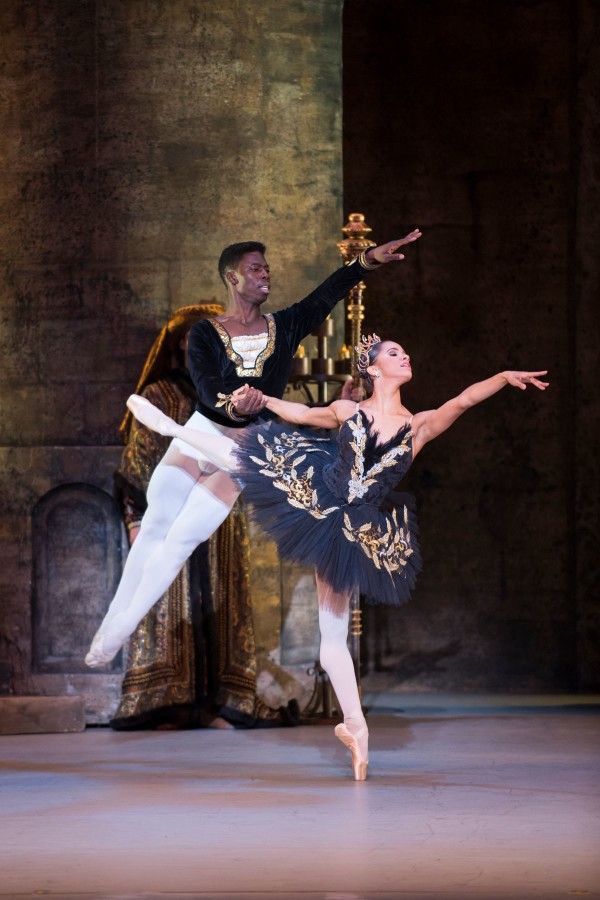

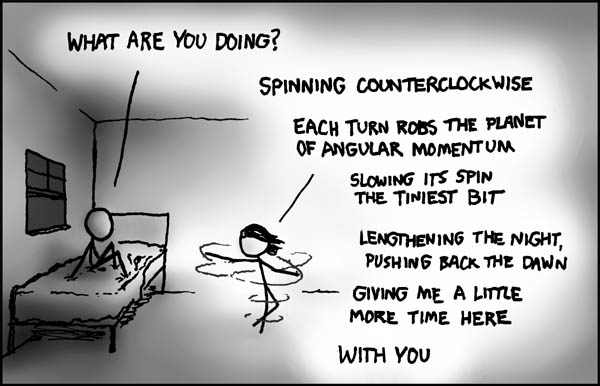
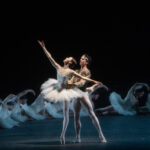

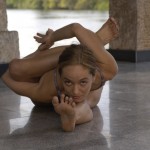

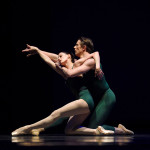
Those fouettés should be sacred and ballerinas SHOULD be scared of them. They’re the Mount Everest of the classical ballet world. If you can’t climb Mount Everest you don’t deserve the prima ballerina title.
Honestly, to those outside of ballet this just looks like some sort of pissing contest. It was boring after 5. Who wants to watch someone turn 32 times. It’s just silly. While we are at it, let’s just watch Federer and Nadal hit 32 forehands down the line for the title. Lol.
Agree. Audiences often go nuts over fouettés because they look so hard, but there are harder steps in ballet.
Many choreographers will create a role on a specific dancer, tailoring it to her/his strengths, but adjust some of the steps for later casts. Eminently sensible.
Seriously, Marc Roy??? So Maya Plisetskaya doesn’t deserve to be called a prima ballerina, and neither does Sara Mearns or Margot Fonteyn, who only ever managed 27 at the most and sometimes just bailed on the fouettés altogether?
Ballet to the People misses an important point though. Misty Copeland hasn’t earned the right to skip the fouettés yet, and she knows she hasn’t. She has to OWN the leading roles in the classics first, and she hasn’t performed them enough to do that.
This is the main problem with ballet companies today: they aren’t developing principal dancers like they used to. Because their seasons are so short, they only do 6 Swan Lakes instead of 16, and they rotate so many dancers through the lead roles (esp. when they import so many guest stars like ABT does) so a dancer like Misty is lucky to get two performances a season. That forces her to guest with other companies to get the experience, and that’s how the whole unfortunate cycle perpetuates itself. Guesting is not the ideal road to mastery. It takes time for a partnership to gel, for the ballerina to be able to trust her partner. And it takes a coach who knows you well to be able to move you to the next level of your game. The Russians get this. So do the French (though with Benjamin Millepied running the show the New York way, maybe this will change.) Look at the huge increase in ballet injuries in the past decade. Even when training is supposed to have gotten so much better, dancers are hurting themselves more frequently – because casting and coaching have deteriorated.
To say Misty Copeland’s problem is her fouettés is to miss the forest for the trees. Her problem at the moment is that she is not getting the performing experience and the coaching she needs to earn that prima ballerina title. And she’s not alone.
Misty’s problem is that she’s uneven. Some parts of her performances are excellent, some mediocre. She needs to learn to do the fouettes, not get around them.
Pingback: Writing Roundup: Dance Bloggers' Choice Of 2015
I love all these videos that you chose. What they prove is that, when the fouettés are done confidently, they look like different steps from dancer to dancer. This is the genius of ballet, even a plain old arabesque is not the same on every dancer, bodies are different, training is different, attack is different.
And I don’t agree that fouettés have a specific meaning in the dance, it’s really up to the dancer and what she brings to the role, they can be a sign of evil or joy or psychological confusion.
Your comparison of Sara Mearns’ Odile to Misty Copeland’s is spot on …. you can’t assume that the more seasoned dancer will always have a better solution …. there are so many factors affecting live performance, that’s what makes it so exciting. People who think they are getting their fill of dance by watching bits on Youtube are deluded. Years ago, most people could afford to buy tickets to see all the different Swan Lake casts and we could argue about whose fouettés were the prettiest, the smuggest, the most terrifying, but who can afford that now??
IMO City Ballet dancers don’t have the stamina for these full length ballets. Their repertory doesn’t prepare them. They can give 110% when they’re on stage for short bursts in a mixed bill, but they aren’t used to the demands of Swan Lake, Giselle, Coppelia, etc. Balanchine’s one-act Swan Lake was fine. They own the world’s greatest franchise, they should stick to it, leave the story ballets to the Russians, ABT, POB, La Scala.
RJ when was the last time you went to see ABT? If you follow their casting in NY and on tour you’ll see that they seem to have wound down their guest star practice except when a principal is injured and they need a big name. Whether this is because of budget or artistic policy doesn’t matter, it’s much better for the local dancers.
Still, what you say about short seasons and limited opportunities for developing principals is very true. For all the companies.
Deborah I really doubt any of the companies are going to scale back and limit their repertoire. Those days are gone. They are all trying to appeal to the widest possible audience, so they have to do the fairy tale ballets, and the Balanchine and the Forsythe and the Wheeldon and the Twyla. And the younger ones like Liam Scarlett so they aren’t accused of being behind the times. That’s probably why the injury rate is climbing in all these companies. Not all dancers have the bodies and the training that makes them versatile enough to jump from one style to another.
Alastair Macaulay weighs in on the fouettés and the Misty Copeland hype: http://www.nytimes.com/2016/06/14/arts/dance/swan-lake-and-its-32-fouettes.html
If Misty can’t get those fouettés, how could she ever perform something like Theme and Variations? The fact that she can’t be bothered to improve them or train is pretty pathetic, although I’m sure she assumes that her target audience doesn’t know a fouetté from a frappe and won’t notice anything missing.
At the Royal Ballet in England, you do 32 fouettés with a double on every fourth turn at least. If Misty Copeland can’t do 32 fouettes she should hardly be counted a professional ballerina. Many more years into her career she could play with the choreography but at this stage she should just get on with it
Calmez-vous. Misty Copeland has done the 32 fouettés. I have seen her do them. I suppose she does not do them every time but neither did Ananiashvili or the other great ballerinas (though I am not old enough to have seen Ananiashvili you can read about it.) These are humans not robots, that is why we are willing to go see Swan Lake and Don Quixote 36,000 times because sometimes magic happens and sometimes disaster happens and both are exciting.
Thanks for the report, Paul T. But I won’t see Don Q 36,000 times I don’t care who’s in it. I will however see Swan Lake 36,000 times as long as it’s not the Soviet version with the happy ending in which Odette and Siegfried live happily ever after in a Socialist paradise.
Are you asking the wrong question. Are you counting how many fouettés or back flips Misty Copeland can do or asking whether she is right for certain kinds of roles. Ballet standards are deteriorating because we have superhuman expectations of dancers. In past generations a dancer was a type. A dramatic ballerina or a classical storybook princess ballerina. A modern Jerome Robbins The Cage kind of ballerina or a blank faced Four Temperaments ballerina, and so on. Now for some unclear motive — maybe not wanting to have too many expensive dancers weighing down the payroll?? — ballet companies expect their top dancers to be able to do everything otherwise they don’t get promoted to principal. But truth is very very few dancers are versatile enough to shine in the wide repertoire that ballet companies today think they have to offer. We the audiences are partially to blame, but ballet company managements should also stop deluding themselves.
JPdeV, I have seen Misty Copeland so far in about six different soloist and principal roles, in story ballets old and new, and more abstract stuff. Maybe I haven’t seen as much of her as you have, but I don’t see her as one type or another. I think of her mainly as a modern American ballerina in a similar mold as Tiler Peck or Vanessa Zahorian. I gather you think she is not suited to Odette-Odile but not because of her unreliable fouettés.
Why is it okay to change an integral part of a classic ballet like Swan Lake because of lack of technical proficiency? Why not change the male brise’s in Giselle or the pas de chat and epaulment in the dance of the little swans? There are certain steps that are integral to the classics. It’s not an excuse that a ballet is over 100 years old or that some people find 32 fouettes boring. (?) Most ballets have exciting parts and boring parts, but the whole is what matters. The “old” ballets have so much to offer – history, technique, comedy, tragedy, creativity. If a person desires to be a great ballerina that person should be able to meet the technical demands of the classics. Otherwise, it is a insult to the great ballerinas who work and have worked so hard to achieve the necessary technical proficiency. If a person cannot meet the technical demands of classical ballet, maybe they could choose another dance form – modern, contemporary, jazz etc. Personally, I admire the 32 fouettes…not because they are necessarily exciting or new…but because I admire the person doing the fouettes who has worked so hard to achieve them (and because I have tried them and know what it takes to master them).
Good point. Understanding that records of original choreography have mostly been lost, and that what we accept today as “original” are usually imperfect recollections that have been much fiddled with through the generations, it is still important, as you say, to honor whatever we have left of the traditions. Remember that bravura steps like the fouettés were often inserted into classic story ballets at the request of the originating ballerina for whom they were her signature.
From that perspective, it makes sense to accommodate the demands of today’s ballerinas – and stagers often do bow to dancers who want to tinker with certain steps. Not to single out the women… the men do it, too.
But the 32 fouettés are more iconic than any other sequence in classical ballet – more than the cygnets or Albrecht’s entrechats in Giselle (and even those are not sacred, some Albrechts do the traveling brisés which I much prefer – more meaningful since he is trying to escape death, and visually so poetic.) No one would raise a fuss if an Albrecht didn’t do entrechats or brisés as long as the replacement looked suitably virtuosic and desperate.
The point is: no one is advocating the wholesale changing of what has come to be considered traditional choreography, just one or two sequences which have tripped up some great ballerinas. One that immediately comes to mind is the nerve-racking scarf variation in Bayadère. Blow that one out of the water, too, as far as I’m concerned. I fail to see why changing the 32 fouettés to piqué turns, for example, would insult other ballerinas. Ballet is not a competition (regardless of what YAGP and the rest of that industry would have you believe.) The reason why it’s exciting to see different casts in the same story ballet is because they bring such different looks and interpretations to the thing, not because we want to rank them on how high they jump or how many turns they do.
I would rather see a great ballerina succeed in the execution of a replacement that fully honors the intention and meaning of the choreography in that moment in the story, than stumble over that one step. I mean, if she stood there and did relevés passés instead of fouettés, that would be a cop out. And instead of that blasted scarf, why doesn’t the stager hand Nikiya one of those long ribbons on a stick? That would be equally lovely and convey the same idea as the scarf – of long plumes of smoke that bind the faithless Solor to her.
There are 11 year-olds out there that can do 32 fouettes en pointe at the drop of a hat. What does that say about Misty? It says that she doesn’t have the technical chops to do these roles or to be a principal dancer at what should be one of the most esteemed companies on earth. I could overlook if this was a one-time thing. But there are numerous reports of her falling out of the fouettes or not even attempting them at all in all of her Swan Lake performances.
Yes, but can they dance?
Olga Preobrajenska taught her students to start fouettes at 45 degrees, saying that starting at a la seconde is guaranteed to throw one off center and necessarily having to travel. None of us have seen Baronova or Toumanova essay the role, but this tid bit of info was shared with me by Tatiana Stepanova, probably the last ballerina she developed and who danced for de Basil’s Original Ballets Russes in South America during wwI and then in the U.S. in 1946-7 before she married and
left active dancing.
Fascinating, Renee.
Came across this as misty fouetté situation is in the media again…
Yes. In some of the more silly comments appended to the unremarkable video clip of Misty’s recent fouettés + piqués sequence in the role of Odile in Singapore, self-styled guardians of the flame (many of them Europeans, apparently) are trumpeting this performance as evidence of America’s decline. Because Americans no longer demand perfection, because they celebrate mediocrity, because they have the temerity to cast a black dancer in a white role, and because they have a habit of posting uplifting comments, the nation is doomed. This would be funny if it wasn’t so nakedly racist.
ballettothepeople – why do you need to bring race into it? White dancers are criticized all the time, remember Oksana Skorik’s video compilations on YT (they have since been removed)? But when someone criticizes a half black dancer who doesn’t even look black btw, not in the theater, it’s always due to racism, right? There are many black dancers who have great technique. I’ve not heard of Lauren Anderson ever failing at fouettes. I’ve not heard anything bad said about Michaela DePrince. There is btw a great video of Michaela DePrince dancing Don Quixote pas de deux where she does perfect fouettes.
I did not “bring race into it.” The ballet Tea-Party types did that all by themselves with their hate-filled comments online.
And unfortunately there are not “many black dancers with great technique” because there are not many black dancers, period. Especially not at principal level with the world’s top companies. That’s the problem.
The Singapore video clip shows an unmemorable moment in performance – not particularly good and not particularly horrible, but a smooth and decent “save.” No doubt you’ve seen other ballerinas come to grief in the fouettés in far more awkward and embarrassing fashion. Most of them get a pass with “they’re human; shit happens.” A few have been called out but not with that kind of vitriol.
Copeland has stuff she needs to work on, like all ballerinas. I’ve observed, for instance, that her hops on pointe do not inspire confidence. The timing of a few lifts has been off. I’ve occasionally seen her emote at a too-high wattage.
By all means, uphold the standards of classical ballet while making room for individual tastes and distastes. Argue with me when I say that Svetlana Zakharova is the greatest living Giselle, that Oksana Skorik’s Odette-Odile is too brittle, and that Sara Mearns is the only ballerina who can hike her shoulders toward her ears and somehow make that look beautiful and absolutely right. These are opinions and long may we debate them.
It is a fact, though, that today Misty Copeland sells out a theater faster than any other living ballet dancer. That fact alone triggers the racists – so when they spot a bootleg video of an unremarkable 50 seconds in Swan Lake, they will manufacture a crisis.
That is also why Michaela DePrince is less of a target for haters: though her backstory is perhaps even more moving than Copeland’s, she does not have as high a profile OUTSIDE the ballet world, and thus does not have the same drawing power of Copeland. Soon she may. The ballet world desperately needs more dancers with that kind of magnetic quality to attract new, younger and more diverse audiences.
Fouettés are just show-off. Or at best, some kind of misguided Ballet Quality Control Test. And very boring. They are done for the sake of other ballet professionals, not for the sake of artistry. When I watch a video, I skip over them. Unfortunately, in live performances they must be endured, so the dancer’s colleagues can watch them with eagles eyes in search for flaws. Spare me!
Just reading the comments here I feel disgusting…. nothing but toxic waste of the ballet community. Ballet to me is magical… with all 32 fouettés included. i’ve been to theatres all around the world, but Russia is where the magic is. It’s where you feel it moving through you like your part of it. I truly believe if you spend your time being overly critical, completely missed the point as a spectator, if you want to be overly critical become a prima ballerina. Classical ballet is just that…classical. So if you want something more exciting or something new, go outside the box…but don’t expect classical ballet to change much.
I understand what you are saying and the Russians did have something special when it came to the lead roles in the classics.
But classical ballet is two things: it’s a performance canon and it’s a training technique.
The technique must adapt over time as science, nutrition and sports medicine become more refined. Otherwise you are recklessly punishing dancers’ bodies.
I agree the canon has not changed, however. Though since the days of Taglioni then Legnani, ballerinas and danseurs who were big enough box office draws have gotten away with tailoring their roles to suit their talents and their imperfections. So the choreographic details within the canon were never cast in stone though certain versions of Sleeping Beauty, Swan Lake, etc. have – in the 20th century – become ‘the canon.’
The fact that even young students today can pull off fouettés in the studio is a poor argument for insisting that every Odile do them. Young students do not possess the artistry nor the stamina needed to convincingly make it through the ballet to the point where the fouettés are launched. 32 are exciting when done with panache but excruciating otherwise. And with a number of excellent alternatives, discussed in this post, why require that every Odile do them?